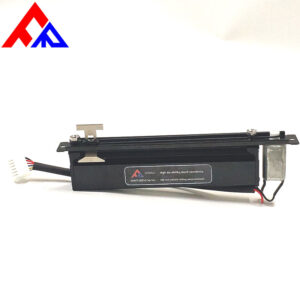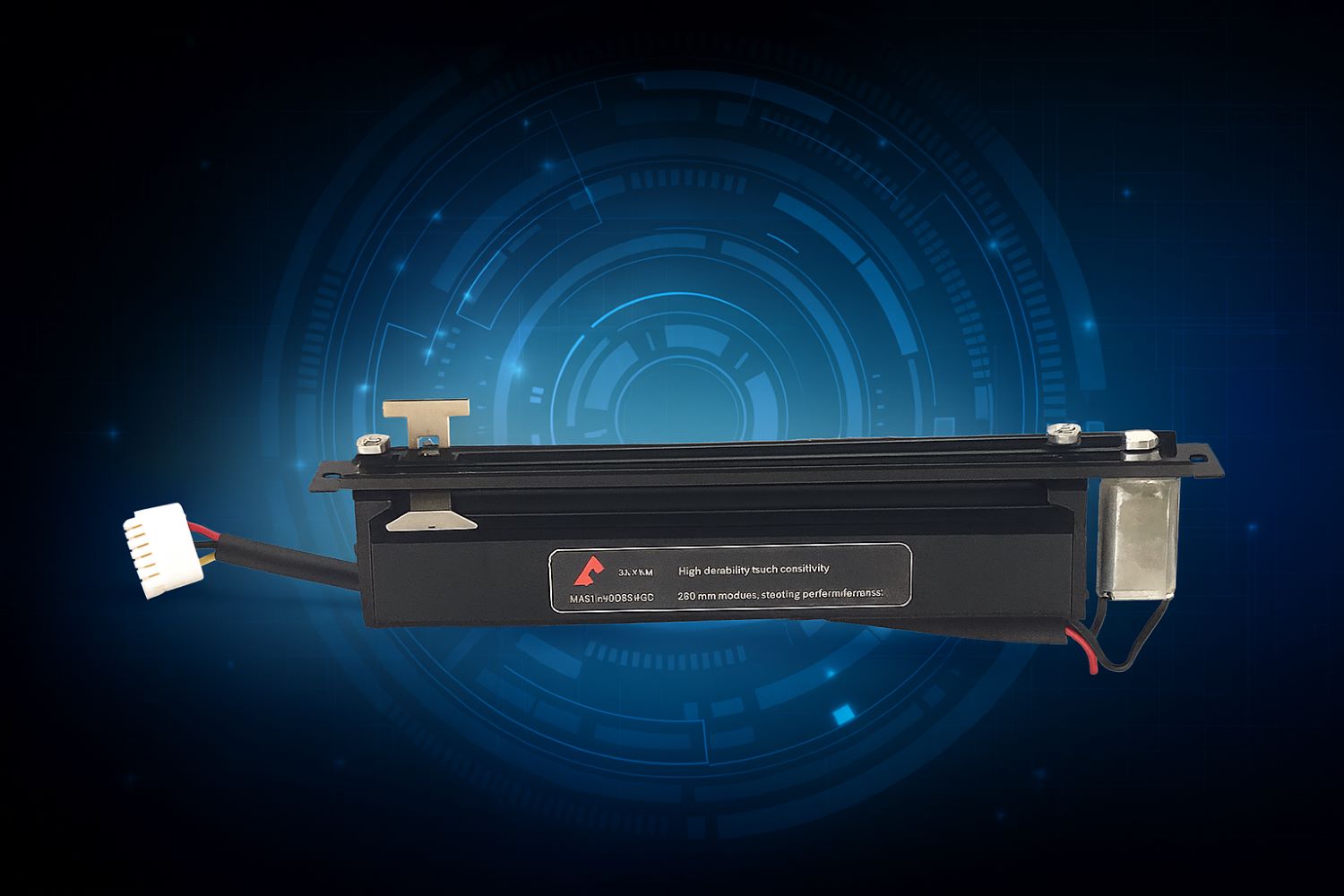Rethinking the Role of Slide Potentiometers
Slide potentiometers are known for simple audio mixing tasks. But today’s designs demand much more. While rotary potentiometers dominate compact spaces, slide potentiometers offer intuitive, tactile, and linear control. This makes them suitable for modern interfaces where direct engagement matters.
More importantly, engineers are now using innovative slide potentiometers in non-traditional applications. This article explores five standout examples, revealing how these versatile components push boundaries across industries.
Let’s explore how you can turn a basic part into a creative control input powerhouse.
What Are Slide Potentiometers?
A slide potentiometer (or linear potentiometer) is a variable resistor that adjusts voltage by sliding a contact (wiper) across a resistive track. The result? Smooth, linear input changes.
While rotary potentiometers rotate, slide pots move along a straight line. This provides visual feedback and precise finger control, making them ideal for:
-
Audio equipment
-
Mixing consoles
-
Light dimmers
-
Lab devices
However, new digital designs are stretching the capabilities of slide potentiometers beyond these familiar zones.
1. Smart Home Lighting and Ambience Control
From Dimming to Dynamic Scenes
Traditional light dimmers use rotary knobs. But today’s homeowners want visual scene control—fast and intuitive.
Here, slide potentiometers excel.
Instead of rotating endlessly, users slide fingers across preset ranges—controlling.
-
Light intensity
-
LED color temperature
-
Mood transitions
Moreover, the linear motion allows scene memories to be set along the slider track. Each segment corresponds to a room mood—soft reading, dinner party, relaxation, etc.
This non-traditional application aligns well with smart home dashboards. Combine it with capacitive touch overlays, and slide pots become sleek, modern lighting interfaces.
2. Interactive Museum Displays and Educational Panels
Learning Through Touch and Movement
Modern museums aim to teach by engaging all senses. For exhibits that explain forces, energy flow, or timelines, static buttons fall short.
That’s why designers now integrate slide potentiometers into educational panels.
Users can:
-
Move a slider to simulate energy transfer
-
Explore color wavelengths
-
Visualize sound waves changing in real time
In these settings, creative control input turns abstract data into tangible experience. Furthermore, visual markings along the slide path allow intuitive operation, even for children.
Slide potentiometers are easy to install behind durable acrylic covers, making them suitable for public interactive kiosks.
3. Custom Musical Instruments and Experimental Audio Design
Building New Sonic Landscapes
Synthesizers once defined the traditional use case for slide pots. Yet in modular synthesis and experimental music circles, their potential is far from exhausted.
Now, musicians create custom instruments using:
-
Multi-track sliders to layer pitch, volume, and tone
-
LED-embedded slide pots for visual rhythm guidance
-
Re-mapped potentiometers as MIDI controllers
These setups blend analog feel with digital flexibility.
Importantly, the tactile feedback of slide potentiometers makes them irreplaceable for live performance control.
Musicians need predictable motion and visible travel range. Slide pots offer both—making them core tools in creative sound design and expressive modulation control.
4. Robotics and Haptic Feedback Interfaces
Tactile Precision for Motion Control
Robotics depends heavily on precise feedback systems. Slide potentiometers fit well into control panels for manual input override and testing mechanisms.
In robotic arms or linear actuators, developers use slide pots to:
-
Manually calibrate range-of-motion
-
Simulate movements during training
-
Tune sensor thresholds in field testing
Even in wearable robotics, sliders act as input bridges between operator intent and machine behavior.
For example, in exoskeleton testing, sliders help regulate assistive torque in real time—ensuring both comfort and responsiveness.
This represents a non-traditional use where the device becomes part of real-time, touch-driven motion systems.
5. Gaming and Virtual Reality Equipment
From Control Panels to Immersive Interfaces
Slide potentiometers are finding unexpected roles in VR, AR, and simulation gear.
In cockpit simulators, for instance, users need physical throttle and trim controls. Traditional buttons or joysticks don’t deliver the same tactile immersion.
Instead, slide potentiometers offer:
-
Smooth analog input
-
Real-world movement mapping
-
Position memory along a track
VR fitness systems also use sliders to simulate rowing, cycling, or resistance settings.
By offering analog control in a digital context, slide potentiometers enhance realism and interactivity—essential for immersive technology.
Moreover, custom game controllers with linear sliders offer new accessibility pathways for gamers with fine motor limitations.
Why Slide Potentiometers Excel in Creative Applications
So, what makes slide potentiometers the go-to choice in these non-traditional applications?
1. Human-First Design
Linear movement mirrors how people naturally point or guide. This makes sliders more intuitive than knobs in many cases.
2. Visible Positioning
Users see current values at a glance. This enhances interaction confidence—especially in multitasking scenarios.
3. Customization
Slide potentiometers come in various lengths, tapers, and resistances. Custom sliders can be paired with lighting, displays, or sensors.
4. Durability
Modern sliders are rugged. With dust-proof designs and metal shafts, they survive public or industrial use.
5. Low Power Requirement
These analog components work in low-voltage systems—ideal for embedded or IoT devices.
 How Fanrui Supports OEM Projects with Innovative Slide Potentiometers
How Fanrui Supports OEM Projects with Innovative Slide Potentiometers
At Fanrui, we support OEMs, engineers, and designers by offering:
-
Wholesale slide potentiometers in various configurations
-
Custom resistance values and taper curves
-
Durable mechanical designs for field use
-
Electrical specs for industrial or educational projects
Whether you need 10,000 units or 100 custom pieces, our team ensures compatibility with your vision.
We also assist with prototyping and supply chain logistics, making sure your product moves smoothly from idea to mass production.
Optimizing Your Product with Creative Control Input
As interfaces evolve, creative control input becomes central. End-users no longer tolerate cold, fixed-function buttons. They expect feedback, fluidity, and adaptability.
Slide potentiometers enable these goals.
From touch overlays to LED indicators and IoT integration, your next product can stand out—if you give users something to feel, not just press.
Slide pots turn hardware into experiential controls. Use them to bridge tactile design with technical performance.
Final Thoughts – The New Era of Linear Interaction
We’ve moved far beyond volume control.
Today’s innovative slide potentiometer designs prove that non-traditional applications are not only possible, but powerful. From museums to mechatronics, slide pots support interaction where intuition matters most.
Fanrui remains committed to expanding these boundaries. With reliable supply, responsive customization, and engineering insight, we help you build what’s next.
If you’re developing a unique interface, don’t overlook the power of the slide. It may be the most human design in your control system.







CreatBot D600 Pro 2 Industrial 3D Printer is a cutting-edge industrial 3D printer designed for professionals requiring precision, reliability, and flexibility in 3D printing. As part of the D600 series, it incorporates a large build volume, advanced dual extrusion technology, and high-performance features suitable for industrial use and complex materials.
CreatBot D600 Series Overview
The CreatBot D600 Series and D600 Pro models establish new standards for large-scale 3D printers solutions. With a build volume of 600 ? 600 ? 600 mm, these professional large format 3D printers cater to a broad spectrum of industrial 3D printing demands, from big model prototyping to end-use production. The D600 Pro lineup and the latest D600 Pro 2 introduce further enhancements in performance and material compatibility.
Main Features and Benefits
Large Industrial Build Volume
Build size: 600 ? 600 ? 600 mm
Ideal for large format 3D printing projects and industrial 3D printing
Supports technical materials and complex prototypes
Dual Extruder System and High-Temperature Printing
4th generation 1.75mm dual extruders and hotends for multi-material printing
Right and left extruder design for flexible printing process
Supports high performance 3D materials, including PLA filament, nylon, carbon-fiber, and more
Maximum nozzle temperature: up to 420°C (high temperature)
Heated build chamber for premium applications
Accuracy, Speed & Dependability
Professional 3d print quality with accurate layer resolution
Advanced motion system for fast printing and robust performance
Consistent print speed up to 120 mm/s
Reliable operation for continuous industrial use
Compatible Materials and Filaments
Broad Filament Support
Works with a broad spectrum of filament types: PLA, ABS, PC, PETG, PVA, nylon filament, carbon fiber, and more
Designed for engineering-grade materials and functional prototyping
Advanced dual extrusion system enables multi-material and soluble support printing
Uses: Prototyping & Manufacturing
The CreatBot D600 Pro 2 and D600 Pro serve a diverse set of applications:
Rapid prototyping and large scale 3D printing models
Functional parts for automotive, aerospace, and engineering
Tooling, jigs, and fixtures for industrial production
Art, architecture, and creative projects requiring large industrial 3D printing
Technical Specifications
Models: CreatBot D600 Pro 2, D600 Pro, D600
Build volume: 600 ? 600 ? 600 mm
Extruder: Dual extruder, 4th generation 1.75mm dual extruders and hotends
Max nozzle temperature: 420°C
Bed temperature: up to 100°C
Filament size: 1.75 mm
Layer resolution: 0.05 – 0.3 mm
Supported filament: PLA, ABS, PC, PETG, PVA, nylon, carbon fiber, engineering-grade materials
Print speed: up to 120 mm/s
Chamber: Heated, for improved material properties
Interface: Touchscreen interface
File formats: STL, OBJ, AMF
Comparison: D600, D600 Pro, and D600 Pro 2
Key Differences
D600 model: Entry-level industrial large scale 3d printer for basic applications
D600 Pro: Enhanced with heated chamber, auto bed leveling, and wider material support
D600 Pro 2 (professional version): Adds higher print speed, improved reliability, and HS (high speed) configuration
Other CreatBot Models
CreatBot D1000 HS for even larger build volumes
CreatBot lineup includes industrial and professional 3d printer solutions
FAQ
Compatible Materials for CreatBot D600 Pro 2
The D600 Pro 2 is compatible with a wide range of filament including PLA, ABS, PETG, PC, nylon, carbon-fiber, and other engineering-grade materials.
What is the maximum build volume of the D600 Pro 2?
The printing volume is 600 ? 600 ? 600 mm, supporting large-scale and industrial 3d printing needs.
Dual Extruder and High-Temp Support on D600 Pro 2
Yes, it is equipped with dual extrusion technology and reaches up to 420°C for high-temperature printing.
Differences Between D600 Pro 2 and D600 Pro
The D600 Pro 2 offers higher print speed, improved reliability, and the new HS (high speed) option.
Summary
The CreatBot D600 Pro 2 and the CreatBot D600 Pro industrial professional set the benchmark in the industrial 3D printer category. With exceptional build size, robust dual extruders and hotends, compatibility with engineering-grade materials, and high performance across applications, they empower businesses and engineers to achieve new heights in industrial 3d printing.
creatbot d600 pro industrial
creatbot d600 pro
dual extruder
d1000